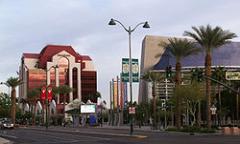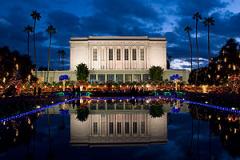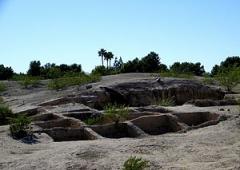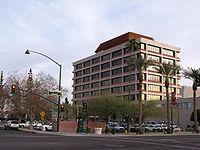Mesa, Arizona, Hgh State Clinic, Hgh Injections, Hrt Doctors
Mesa, Arizona Blood Testing Facilities
 Represents a LabCorp blood testing facility
Represents a LabCorp blood testing facility Represents a Quest Diagnostics blood testing facility
Represents a Quest Diagnostics blood testing facility

Nearby Labcorp Blood Testing facilities:
- Labcorp Center Distance: 2 m, 1950 S Country Club Dr Ste 4, Mesa, Maricopa County, AZ, 85210
- Labcorp Center Distance: 4 m, 1950 E Southern Ave Ste 101, Tempe, Maricopa County, AZ, 85282
- Labcorp Center Distance: 5 m, 4001 E Baseline Rd Ste 201, Gilbert, Maricopa County, AZ, 85234
- Labcorp Center Distance: 7 m, 3271 N Civic Center Plz Ste 9, Scottsdale, Maricopa County, AZ, 85251
- Labcorp Center Distance: 8 m, 6952 E Broadway Rd Ste 105, Mesa, Maricopa County, AZ, 85208
- Labcorp Center Distance: 11 m, 9465 E Ironwood Square Dr 103, Scottsdale, Maricopa County, AZ, 85258
- Labcorp Center Distance: 13 m, 1010 E Mcdowell Ste 201, Phoenix, Maricopa County, AZ, 85006
- Labcorp Center Distance: 14 m, 16838 E Palisades Pkwy A-101, Fountain Hills, Maricopa County, AZ, 85268
- Labcorp Center Distance: 15 m, 500 W Thomas Rd Ste 370, Phoenix, Maricopa County, AZ, 85013
- Labcorp Center Distance: 16 m, 8575 E Princess Dr Ste 119, Scottsdale, Maricopa County, AZ, 85255
- Labcorp Center Distance: 17 m, 9250 N.3Rd St Ste 3017, Phoenix, Maricopa County, AZ, 85020
- Labcorp Center Distance: 18 m, 3815 E Bell Rd Ste 1450, Phoenix, Maricopa County, AZ, 85032
- Labcorp Center Distance: 21 m, 6410 S Kings Ranch Rd Ste 3, Gold Canyon, Pinal County, AZ, 85118
- Labcorp Center Distance: 24 m, 19636 N 27Th Ave Ste 102, Phoenix, Maricopa County, AZ, 85027
- Labcorp Center Distance: 26 m, 10815 W Mcdowell Rd Ste 302, Avondale, Maricopa County, AZ, 85323
- Labcorp Center Distance: 28 m, 9139 W Thunderbird Ste 150, Peoria, Maricopa County, AZ, 85381
- Labcorp Center Distance: 30 m, 13555 W Mcdowell Rd Ste 208, Goodyear, Maricopa County, AZ, 85395
- Labcorp Center Distance: 35 m, 14973 W Bell Rd Ste 100, Surprise, Maricopa County, AZ, 85374
- Labcorp Center Distance: 36 m, 453 E Cottonwood Ln Ste 3, Casa Grande, Pinal County, AZ, 85222
- Labcorp Center Distance: 84 m, 12152 N Rancho Vistoso Blvd, Oro Valley, Pima County, AZ, 85755
- Labcorp Center Distance: 86 m, 7732 E Florentine Rd., Prescott Valley, Yavapai County, AZ, 86314
- Labcorp Center Distance: 87 m, 990 Willow Creek Rd., Prescott, Yavapai County, AZ, 86301
- Labcorp Center Distance: 89 m, 3155 Stillwater Dr Ste A, Prescott, Yavapai County, AZ, 86305
- Labcorp Center Distance: 92 m, 115 S Candy Lane Ste B2, Cottonwood, Yavapai County, AZ, 86326
- Labcorp Center Distance: 95 m, 1777 W Saint Marys Rd Ste 101, Tucson, Pima County, AZ, 85745
- Labcorp Center Distance: 98 m, 1011 N Craycroft Rd Ste 201, Tucson, Pima County, AZ, 85711
- Labcorp Center Distance: 99 m, 448 N Highway 89, Chino Valley, Yavapai County, AZ, 86323
Nearby Quest Blood Testing facilities:
- Quest Center Distance: 35 m, 3624 W Anthem Way, Anthem, Maricopa County, AZ, 85086-0454
- Quest Center Distance: 37 m, 1860 E Salk Dr, Casa Grande, Pinal County, AZ, 85122-5591
- Quest Center Distance: 63 m, 117 E Main St, Payson, Gila County, AZ, 85541-4643
- Quest Center Distance: 85 m, 3161 N Windsong Dr, Prescott Valley, Yavapai County, AZ, 86314-2213
- Quest Center Distance: 87 m, 980 Willow Creek Rd, Prescott, Yavapai County, AZ, 86301-1616
- Quest Center Distance: 89 m, 1925 W Orange Grove Rd, Tucson, Pima County, AZ, 85704-1150
- Quest Center Distance: 92 m, 203 S Candy Ln, Cottonwood, Yavapai County, AZ, 86326-8107
- Quest Center Distance: 94 m, 1773 W Saint Marys Rd, Tucson, Pima County, AZ, 85745-2654
- Quest Center Distance: 99 m, 6565 E Carondelet Dr, Tucson, Pima County, AZ, 85710-3533
Mesa Hormone Replacement Therapy Services
Most Americans don't really understand how important Hormone Balance is for living a healthy life and maintaining peak vitality. The human body uses hormones to send messages throughout the body and keep all of your organs and systems running in sync. Unfortunately, many Hormones, including HGH and Testosterone, go into a state of decline as we grow older. The Conscious Evolution Institute specializes in Hormone Optimization and Hormone Treatments designed to restore Hormone Balance. We are proud to serve the city of Mesa, as well as provide our services to all four corners of the state of Arizona.
Mesa Testosterone Therapy for Andropause and Testosterone Deficiency
One of the many fine Hormone Therapies that we provide at the Conscious Evolution Institute is Testosterone Restoration. As you likely know, Testosterone is the hormone that differentiates men from women. You likely also know that Testosterone is responsible for controlling and maintaining sexual function. What you may not know is that Testosterone also promotes optimal male health in a wide variety of other ways. Testosterone amplifies metabolism and increases physical strength. Testosterone also preserves cardiovascular health as well as psychological health. Men with Low-T are more likely to suffer from issues including obesity, diabetes, heart attack, and erectile dysfunction.
If you've been experiencing sexual issues, and you feel that Testosterone Deficiency may be the cause, understand that ED Treatments only treat the sexual symptoms of Low-T, and still leave your health at risk in other ways. Our clinic can get your Free and Total Testosterone Levels checked, and if you qualify, we can provide you with Testosterone Gels, Injections, or Patches designed to restore your Testosterone to concentrations associated with early adulthood, allowing you to overcome Low-T and potentially vastly improve your health and wellness.
Mesa Bio-Identical HGH Treatments for Growth Hormone Deficiency and Somatopause
Human Growth Hormone Deficiency is another medical affliction that affects patients throughout the United States, both men and women. HGH is a very important hormone. When we are children, it promotes development and growth, when we reach adulthood, it helps to sustain us physiologically by encouraging the body to operate at peak capacity. Like Testosterone in men, however, HGH Levels go into decline as we age.
Because HGH is involved in so many processes, HGH Deficiency is associated with a variety of symptoms that affect health at practically every level: weight gain, depression, cholesterol imbalance, fatigue, waning strength, cognitive decline, increased wrinkles and age lines, and slowed rehabilitation are just some of the symptoms associated with HGH Decline. Bio-Identical Growth Hormone Injections mitigate the effects of this decline by restoring blood concentrations of Human Growth Hormone to normal, youthful levels.
Mesa Sermorelin Acetate Therapy Alternative to Bio-Identical Growth Hormone
Like many medical afflictions, there are often multiple ways to treat the same condition, and the same is true of HGH Deficiency. Along with Recombinant HGH Injections, Sermorelin Acetate is another tool at your disposal to overcome Human Growth Hormone Deficiency. Sermorelin is the functional analog of a hormone known as GH-RH, which is the precursor hormone which leads to the production of HGH.
Clinical study has revealed that, for adult patients suffering from Human Growth Hormone Deficiency, Sermorelin is just as useful in treatment, and for many patients, is the ideal form of treatment. Sermorelin allows the body to control HGH production, which means that the body has the Growth Hormone that it needs, when it needs it. Also, Sermorelin is less strictly controlled than HGH, meaning that your doctor can prescribe it off-label if he or she feels it can benefit your health. Finally, Sermorelin is cheaper than HGH, which many patients find is the icing on the cake.
Mesa HCG Weight Loss Injections
Along with our Hormone Optimization products such as Sermorelin, HGH, and Testosterone, we also offer Hormone Treatments designed to alter and shape your body, such as HCG Therapy. The HCG Diet is a highly effective means to help patients quickly lose weight and reach a new and improved status quo. With the help of Bio-Identical HCG, patients have lost up to seven pounds per week with this specialized Hormone Treatment. The HCG Diet is a combination of Hormone Therapy and Caloric Restriction which amplifies weight loss, preserving body composition and energy while also minimizing the sensation of hunger that makes dieting so difficult. If you have struggled with diet after diet with no long-term results, ask us about Injectable HCG Therapy!
Mesa, Arizona Information
Mesa is the largest suburb of Pheonix, Arizona, and the third most populous city in the state. Mesa is surrounded by other suburbs, including Apache Junction, Gilbert, Chandler, and Tempe. Mesa was first established in 1878, when settlers came to develop a small area of land with an area of only a single mile. Five years later, the city of Mesa incorporated and became an official community.
As a suburb of Phoenix, Mesa has a significant proportion of its population that commutes to the city for work, but also has an established economy of its own. The largest private employer in Mesa is Boeing, and the largest public employers in the city are the Mesa Public School System and Banner Health System, a non-profit health system that operates heavily in the state of Arizona. Along with Boeing, Wal-Mart is another major private employer.
Historically, there is not an abundance of historical evidence regarding the native American people that lived in Mesa before the area was settled by Westerners, but the area was very important to the Apache Indians, and the Hohokam Indians before them. There are interesting archaeological sites in the Mesa area, including the Park of the Canals and the Mesa Grande Ruins. In order to support agriculture, the Mesa area was heavily irrigated by the indigenous people of the area, and those formations and many structures of the society persist to this day and are preserved. Museums in Mesa include the Arizona Museum of Natural History, the Mesa Historical Museum, and the Arizona Museum for Youth. One of the most beautiful landmarks of the city is the Mormon temple, known simply as the Mesa Arizona Temple.
All About Mesa, Arizona Geographic Area


Mesa ( /ËnmÉosÉo/ MES-Éo) is a city in Maricopa County, in the U.S. state of Arizona and is a suburb located about 20 miles (32 km) east of Phoenix. Mesa is in the East Valley section of the Phoenix Metropolitan Area. It is bordered by Tempe on the west, the Salt River Pima-Maricopa Indian Community on the north, Chandler and Gilbert on the south, and Apache Junction on the east. As of the 2010 Census Mesa became Arizona's center of population.
/ËnmÉosÉo/ MES-Éo) is a city in Maricopa County, in the U.S. state of Arizona and is a suburb located about 20 miles (32 km) east of Phoenix. Mesa is in the East Valley section of the Phoenix Metropolitan Area. It is bordered by Tempe on the west, the Salt River Pima-Maricopa Indian Community on the north, Chandler and Gilbert on the south, and Apache Junction on the east. As of the 2010 Census Mesa became Arizona's center of population.
Mesa is the third-largest city in Arizona, after Phoenix and Tucson, the 38th-largest city and largest suburb in the US[clarification needed]. The city is home to 439,041 as of 2010, reported by the Census Bureau, making its population larger than more recognizable cities such as Atlanta, Miami, Minneapolis, Cincinnati, St. Louis, and Cleveland. Mesa is home to numerous higher education facilities including Polytechnic campus of Arizona State University.
The history of Mesa dates back at least 2,000 years to the arrival of the Hohokam people. The Hohokam, whose name means "All Used Up" or "The Departed Ones", built the original canal system. The canals were the largest and most sophisticated in the prehistoric New World. Some were up to 90 feet (27 m) wide and ten feet deep at their head gates, extending for as far as 16 miles (26 km) across the desert. By A.D. 1100 water could be delivered to an area over 110,000 acres (450 km2), transforming the Sonoran Desert into an agricultural oasis. By A.D. 1450, the Hohokam had constructed hundreds of miles of canals many of which are still in use today.
After the disappearance of the Hohokam and before the arrival of the early settlers little is known, as explorers did not venture into this area. By the late 19th century near present-day Mesa, U.S. Army troops subdued the Apache opening the way for settlement.
Daniel Webster Jones led an expedition to found a Mormon settlement in Arizona. Leaving St. George, Utah in March 1877, Jones and others arrived at Lehi, an area within the northern edge of present-day Mesa. Jones had been asked by LDS officials to direct a party of people in establishing a settlement in Arizona. This settlement was initially known as Jonesville and Fort Utah and did not receive the name of Lehi until 1883, when it was adopted on the suggestion of Brigham Young, Jr.
At the same time, another group dubbed the First Mesa Company arrived from Utah and Idaho. Their leaders were named Francis Martin Pomeroy, Charles Crismon, George M. Sirrine and Charles I. Robson. Rather than accepting an invitation to settle at Jones' Lehi settlement, they moved to the top of the mesa that serves as the city's namesake. They dug irrigation canals, some of which were over the original Hohokam canals, and by April 1878, water was flowing through them. The Second Mesa Company arrived in 1879 and settled to the west of where the First Mesa Company settled in 1880, due to lack of available farmland. This settlement was called Stringtown.
On July 17, 1878, Mesa City was registered as a 1-square-mile (2.6 km2) townsite. The first school was built in 1879. In 1883, Mesa City was incorporated with a population of 300 people. Dr. A. J. Chandler, who would later go on to found the city of Chandler, worked on widening the Mesa Canal in 1895 to allow for enough flow to build a power plant. In 1917, the city of Mesa purchased the utility company. The revenues from the company provided enough for capital expenditures until the 1960s. During the Great Depression, WPA funds provided paved streets, a new hospital, a new town hall and a library.
With the opening of Falcon Field and Williams Field in the early 1940s, more military personnel began to move into the Mesa area. With the advent of air conditioning and the rise of tourism, population growth exploded in Mesa as well as the rest of the Phoenix area. Industry aeespecially early aerospace companies aegrew in the 1950s and 1960s. As late as 1960, half of the residents of Mesa made a living with agriculture, but this has declined substantially as Mesa's suburban growth continued on track with the rest of the Phoenix metro area.
According to the 2010 Census, the racial composition of Mesa was as follows:
As of the census 2010 estimate, there were 439,041 people, 146,643 households, and 99,863 families residing in the city. The population density was 3,171.3 people per square mile (1,224.4/km ²). There were 175,701 housing units at an average density of 1,405.7 per square mile (542.8/km ²).
The racial make-up of the city was 81.6% White, 2.4% Black or African American, 2.2% Native American, 2.00% Asian, 0.10% Pacific Islander, 9.3% from other races, and 1.30% from two or more races. 24.0% of the population were Hispanic or Latino of any race.
There were 146,643 households out of which 33.4% had children under the age of 18 living with them, 52.7% were married couples living together, 10.6% had a female householder with no husband present, and 31.9% were non-families. 24.2% of all households were made up of individuals and 9.1% had someone living alone who was 65 years of age or older. The average household size was 2.68 and the average family size was 3.20.
The age distribution was 27.3% under 18, 11.2% from 18 to 24, 29.7% from 25 to 44, 18.4% from 45 to 64, and 13.3% who were 65 or older. The median age was 32 years. For every 100 females there were 98.2 males. For every 100 females age 18 and over, there were 95.6 males.
The median income for a household in the city was $42,817, and the median income for a family was $49,232. Males had a median income of $35,960 versus $27,005 for females. The per capita income for the city was $19,601. About 6.2% of families and 8.9% of the population were below the poverty line, including 10.7% of those under age 18 and 7.1% of those age 65 or over. Mesa's residents exhibit a great deal of economic diversity, with low-income areas constructed somewhat close to high-scale neighborhoods with expensive custom homes. The neighborhood "Marlborough Mesa" has won a community award.
Due to Mesa's extremely long east to west travel distance, in excess of 18 miles (29 km) and large land area 133.13 square miles (344.8 km2), locations in Mesa are often referred to as residing within either East Mesa or West Mesa.
Mesa employs a grid system for street numbering that is different from that used in Phoenix and other portions of the metropolitan area. Center Street, running north to south bisects Mesa into eastern and western halves and serves as the east and west numbering point of origin within Mesa. Streets west of Center St., such as W. University Drive or W. Main St. are considered to be in West Mesa; whereas, streets east of Center St., such as E. University or E. Main St. are considered to be in East Mesa.
Mesa Drive, running north to south and bisecting Mesa into east and west sections, is located 0.5 miles (800 m) east of Center Street, and serves as the zip code boundary between the 85281, 85201, 85202, and 85210 zip codes of Western Mesa and the 85203, 85204, 85205, 85206, 85207, 85208, 85209, 85212, 85213, 85215, 85220, and 85242 zip codes of Eastern Mesa.
Country Club Drive, running north to south and bisecting Mesa into east and west sections, is located 0.5 miles (800 m) west of Center St, and serves as the jurisdictional boundary between Arizona's 5th and 6th congressional districts.
According to the City's 2009 Comprehensive Annual Financial Report, the top employers in the city are:
Mesa, located in the Sonoran Desert, has mild winters and hot summers, with the July average high/low at 106/77. The January high/low is 67/41.


The Fiesta Mall is located in West Mesa, and owned by Westcor. The mall's anchors are Dillard's, Macy's, Sears, Best Buy, and Dick's Sporting Goods. It is located near several shopping centers, Mesa's Bank of America, and other retail stores, banks, and restaurants. An expansion of Fiesta Mall has been planned.
Mesa Riverview is a new outdoor destination retail center in the northwestern corner of the city, near Loop 202 and Dobson Road. At build-out the center will include of 1,300,000 square feet (120,000 m2) of retail space. The anchors include Bass Pro Shops, Cinemark Theaters, Wal-Mart, and Home Depot. Mesa Riverview also includes restaurants and specialty stores, such as Toby Keith's I Love This Bar & Grill.
The Superstition Springs Center is a shopping mall in East Mesa also owned by Westcor. It features an outdoor amphitheatre and fountain which convert to a stage. Anchor stores at the mall are Dillard's, JCPenney, Macy's, and Sears.

Several area freeways serve the Mesa area, such as U.S. Route 60, locally known as the Superstition Freeway, which runs between Apache Junction and Phoenix. It is also served by SR 87 and bypass loops Loop 101, which skirts the western city limits as the Price Freeway, and Loop 202, which bypasses the city on the north and east. Public transportation is provided by Valley Metro with most buses running Monday through Saturday only; until July 2008, Mesa was the largest U.S. city with no public transit service on Sundays. West Mesa is connected to the METRO Light Rail line at the Dobson Road station incongruously called Main and Sycamore (Sycamore being a minor one-block-long street).
Air service in the city is provided by two airports. Falcon Field, located in the northeastern part of the area, was established as a training field for British RAF pilots during World War II and was transferred to the city at the end of the war. Falcon Field has 605 aircraft based there. Boeing builds the AH-64 Apache attack helicopter at a facility adjoining Falcon Field. Phoenix-Mesa Gateway Airport is located in the far southeastern area of the city, and provides alternate but limited air service to Sky Harbor International Airport. Phoenix-Mesa Gateway was formerly Williams Gateway Airport, and before that, Williams Air Force Base, which closed in 1993. Williams Gateway was announced as a new Focus City for Allegiant Air. Service started October 25, 2007.
A 2011 study by Walk Score ranked Mesa 35th most walkable of fifty largest U.S. cities.
Almost all of the city of Mesa is served by public schools operated by Mesa Public Schools; however, a small southern portion is served by the Gilbert Public Schools, and a small western portion is served by the Tempe Elementary School District and the Tempe Union High School District.
Mesa is also home to Mesa Community College, the largest of the Maricopa Community Colleges, which enrolls over 24,000 full and part-time students. In addition, the Polytechnic campus of Arizona State University lies in southeast Mesa. This satellite campus enrolls over 6,000 undergraduate and graduate students in scientific and engineering fields. In addition, A. T. Still University's Arizona School of Health Sciences operates an Osteopathic Medical School in Mesa. The aviation school CAE Global Academy Phoenix is also located in Mesa.
Mesa has five sister cities, as designated by Sister Cities International:

Word Count: 2807






